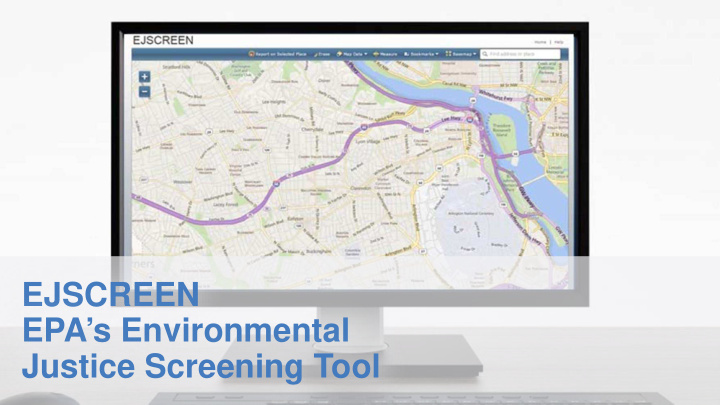



EJSCREEN EPA’s Environmental Justice Screening Tool
E JSCRE E N E PA’S A’S E E NVIR VIRONME NTAL SCRE CRE E E N NING TO G TOOL
EJSCREEN Key Features EJ Indexes Combine demographic and environmental data to highlight vulnerable/susceptible populations Annually Updated Data from most recent U.S. Census Bureau American Community Survey (ACS). Accessible and Intuitive Standard printable reports, maps, and bar graphs High Resolution Data Census block group and tracts for units of analysis page 07
About Vulnerability distribution factors How we… are born Race grow Ethnicity live Social Standing learn Income work play Education social determinants page 04
About Susceptibility biological pre-existing factors diseases age nutritional status gender page 05
Understand these caveats before using • Environmental indicators are mostly screening-level proxies for actual exposure or risk. • Indicators vary in vintage. Estimates are based on historical data. and may not reflect current or future conditions. • EJSCREEN does not cover all environmental issues. • EJSCREEN does not identify “EJ communities.” page 10
UNITS OF ANALYSIS United States State primary governmental divisions of the United States. County Largest divisions within states. Census Tract Collection of Census block groups, mostly between 1,200 and 8,000 people. Block Group Collection of residential blocks, mostly, between 600 and 3,000 people. Block Residential block, bounded on all sides by streets.
Results are ranked as percentiles • Percentiles put indicators into common units of 0 – 100. • For example, a place at the 80th percentile nationwide means 20% of the US population has a higher value. • Ranking values as percentiles allows comparison of indicators measured with different units. It does not mean the risks are equal or comparable. page 10
Recommend
More recommend